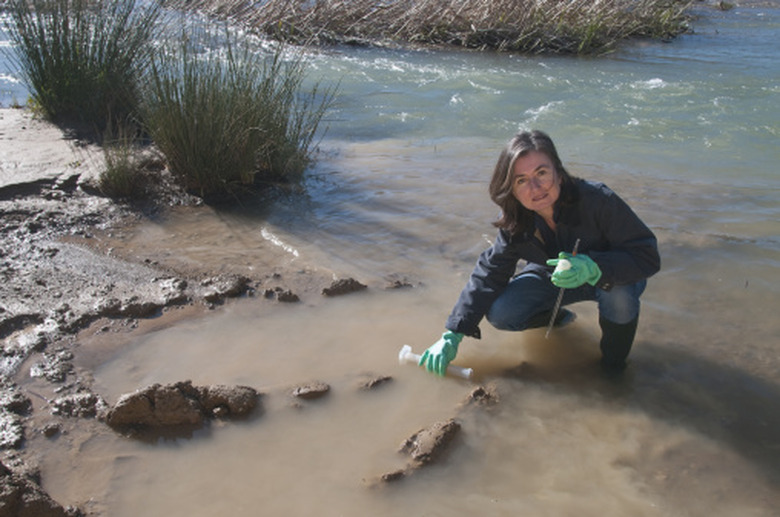What Plants Live In Rivers & Streams?
Streams and rivers are home to a variety of plants. While some freshwater plants are aggressive weeds, others help regulate the delicate ecosystems of streams and rivers by providing food and nourishment to fish and wildlife. Freshwater plants also provide shelter to fish and animals alike.
Hydrilla
Hydrilla
Hydrilla (Hydrilla verticillata) is an intrusive plant that grows in streams and rivers as well as other bodies of water. Originally from Korea, hydrilla grows horizontally on the bottom of a river or stream and spreads outward, forming a dense mat. Hydrilla is a noxious plant that prevents other plants from growing in close proximity. It is characterized most prominently by its sharp, pointy leaves, which grow in sets of four to eight. Flourishing in all zones from U.S. Department of Agriculture hardiness zones 2b through 11, hydrilla is on the USDA invasive plant list. Control and eradication efforts are underway in some states.
Cattail
Cattail
The common cattail (Typa latifolia) grows in the backwaters of rivers and streams, and is hardy in USDA hardiness zones 3 through 11. Cattails grow primarily in shallow waters, where their roots have access to plenty of moisture and mud. The top of a cattail emerges from the water and is characterized by a sharp, pointy spike and sword-shaped leaves. Cattails provide both shelter and nourishment to wildlife.
Bladderwort
Bladderwort
Common bladderwort (Utricularia macrorhiza) is a rootless water plant. Instead of obtaining nutrients through roots, each bladderwort plant has several small bladders that catch and digest small water animals — the Latin word utricularia means "little bag." Each bladderwort features a large stem from which large yellow or lavender flowers emerge. Classified as a carnivorous plant, bladderwort grows throughout North America in USDA hardiness zones 1 through 11.
Dwarf Spikerush
Dwarf Spikerush
Dwarf spikerush (Eleocharis parvula) gets its common name from its multiple long, spiked stems. Spikerush grows primarily along the shallow marshes of rivers and streams, and it is frequently transplanted for use in home aquariums. The plant produces no berries or flowers, but provides a dense habitat for fish. It grows in USDA hardiness zones 2b through 11.
Cite This Article
MLA
Jones, Marie. "What Plants Live In Rivers & Streams?" sciencing.com, https://www.sciencing.com/what-plants-live-in-rivers-streams-13428013/. 21 July 2017.
APA
Jones, Marie. (2017, July 21). What Plants Live In Rivers & Streams?. sciencing.com. Retrieved from https://www.sciencing.com/what-plants-live-in-rivers-streams-13428013/
Chicago
Jones, Marie. What Plants Live In Rivers & Streams? last modified March 24, 2022. https://www.sciencing.com/what-plants-live-in-rivers-streams-13428013/
